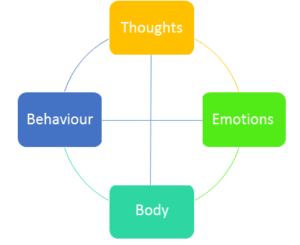Blog
Step by Step 3 – The Friends and Family Test
Little by little, step by step
How do you talk to yourself? When you are commenting quietly in your mind about the things you have done, the conversations you have had, the way you look and the way you are as a person. What are you saying to yourself? How are you talking to yourself? What is the tone of voice that is used?
The way we talk to ourselves, how we relate to ourselves is critical to our wellbeing and sense of self. Afterall, we are with ourselves all the time! We were there from the moment we were born, through every first, through every up and every down. We are with ourselves from the moment we wake up, to the moment we go to sleep and even in our dreams. We know our whole story. No one else will know the story in the way we do. And we will be with ourselves for the rest of the story too.
So if we were going to choose who to have with us every step of the way on the rest of the journey, who would we choose? What qualities would they have? How would they talk to us and work with us? What sort of person would they need to be to be most helpful on this long journey ahead? Would they say the things that we say to ourselves every day?
This is where the ‘Friends and Family Test’ can come in handy. Often the way we talk to others, to those we value the most, is very different to the way we talk to ourselves. For example, think about something that you struggle with regularly. It might be how you are socially, physically, intellectually or emotionally. A common example is the struggle with appearance – most of us have an area of our physical appearance that we feel uncomfortable or even unhappy with. Now imagine that this was a close friend or family member – someone that you really care about. Would you say to them the things you say to yourself about this area of insecurity? Would you say for example “No one wants to look at that!”, “You look really fat!”, ”What is wrong with you?!!”, “How have you let it get this bad?” “Fill in your own thought here”.
Of course not.
And there are good reasons why you are unlikely to say these types of things to a friend or family member. Firstly, it’s unkind. There is very little compassion or love in these types of statements. Secondly, it’s probably not accurate. These are thoughts, not facts most of the time. If you were to rate how accurate these thoughts are with 100% being completely accurate, factual with evidence to support the accuracy – what rating would they get? Last but by no means least – it’s not very helpful. These types of statements are unlikely to motivate, encourage or help in anyway. So if we wouldn’t say them to our nearest and dearest – why are we saying these things to ourselves?
Why does it matter how we talk to ourselves? How we talk to ourselves, how we think is intimately related to how we feel, our confidence, motivation and sense of self. This in turn influences how we behave, how we act and interact with others. This is the underlying principle of the Cognitive Behavioural Therapy model that has proven through research that by challenging our habits of thinking, can change the way we feel and behave. For example, by identifying unhelpful thinking habits, we are more able to consider more helpful alternative ways of thinking about the situation.

Take the following situation: You are walking with two cups of coffee. As you walk into the room to deliver the coffee to your friend/colleague/family member, you trip and spill some of the coffee on the carpet. You think to yourself “Why are you such an idiot?! You always do stupid things like this.” Understandably, this type of thought is likely to result in feelings of frustration, annoyance and maybe even anger. It reinforces beliefs around not being good enough. It is these types of thoughts that build up over time, gathering ‘evidence’ to prove the belief. However, it is not always accurate or helpful – especially as we have a ‘negativity bias’. That is, we are hard wired to focus in on threat, the bad….and the ugly! (see the first blog in the series that talks in more detail about the negativity bias).

Research shows that by making changes to the way we think (Hoffman et al, 2012) and the way we behave (Dimidjian et al, 2006) can improve how we feel. There is strong evidence that Cognitive Behavioural Therapy helps improve anxiety, low mood, confidence and self-esteem (Hoffman et al, 2012) through teaching skills that directly work with our habits of thought and behaviour.Equally, by changing the way we behave, it can change the way we think and as a result how we feel. You can try this out for yourself. Try sitting with your arms folded, closed body language, arms folded, looking solemn and looking down for 3 minutes and notice how you feel. Then try sitting in the chair upright, shoulders back and relaxed, head up, eyes open and looking ahead with a slight smile for three minutes and notice how you feel this time. Did you notice any difference?
One of these skills is around challenging thinking habits. ‘The Friends and Family Test’ is one way you could try challenging your own thoughts. Try using these 5 steps:
1. Note down the thoughts you have in response to a situation that causes strong emotion. What did you say to yourself? What statements, judgements, interpretations and assumptions did you make about yourself?
2. Have a look at what you have written down and ask yourself – “Would I say this to a close friend or family member in the same situation?”
3. If not, what would you have said to a close friend or family member instead?
4. Say this alternative thought to yourself.
5. What do you notice? Does it feel different?
This is a very basic technique that you can try for yourself. There are a number of different techniques that are taught as part of CBT that can help address unhelpful thoughts and behaviour to improve wellbeing.
If you are interested in learning more about these techniques there are a number of useful books available for example Cognitive Behavioural Therapy for Dummies (see list of references below), the Little CBT workbook and the ‘Overcoming’ series. Alternatively, there are often groups run within the local community to learn these skills with others. Sometimes, it’s helpful to have some individual sessions to learn the skills and apply them to your own particular situations or difficulties.
At Avenue Therapies we run a number of skills based groups and individual sessions that use techniques from the Cognitive Behavioural Therapy model. If you would like further information on this or other therapy techniques we offer, please get in touch with us and we will get back to you at the earliest opportunity.
References
Dimidjian, S., Hollon, S. D., Dobson, K. S., Schmaling, K. B., Kohlenberg, R. J., Addis, M. E., … & Jacobson, N. S. (2006). Randomized trial of behavioral activation, cognitive therapy, and antidepressant medication in the acute treatment of adults with major depression. Journal of consulting and clinical psychology, 74(4), 658.
Hofmann, S. G., Asnaani, A., Vonk, I. J., Sawyer, A. T., & Fang, A. (2012). The efficacy of cognitive behavioral therapy: a review of meta-analyses. Cognitive therapy and research, 36(5), 427-440.
List of Suggested Reading
The Little Book of CBT (Michael Sinclair)
Cognitive Behaviour Therapy for Dummies (Rhena Branch and Rob Wilson)
The Overcoming Series:
Overcoming Anxiety (Helen Kennerley)
Overcoming Low Self Esteem (Melanie Fennel)
Overcoming Depression (Paul Gilbert)
